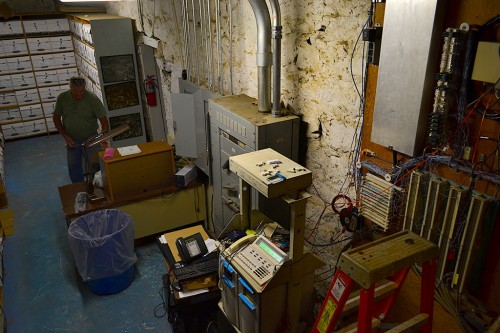 Eric McGowen and Don McQuay led Friend Shari and me on a tour of the Common Pleas Courthouse. Like everyone else, we had heard the stories of the dungeon in the basement and the secret tunnels leading to the river. So, let’s get to the bottom of this, if you’ll pardon the pun.
Eric McGowen and Don McQuay led Friend Shari and me on a tour of the Common Pleas Courthouse. Like everyone else, we had heard the stories of the dungeon in the basement and the secret tunnels leading to the river. So, let’s get to the bottom of this, if you’ll pardon the pun.
The basement is semi-finished in one area and used for record storage, phone and networks equipment, Christmas decorations, miscellaneous junk and three framed aerial photographs, one of which was of Pfisters and Central High School in the early 1950s.
“Dungeon” has dirt floor
I’m still trying to figure out this room, which is located north of the storage room. It contains a heavy steel door and an iron lattice opening that must have been for ventilation.The dirt floor is just as it was during the Civil War.
Which side is the lockup?
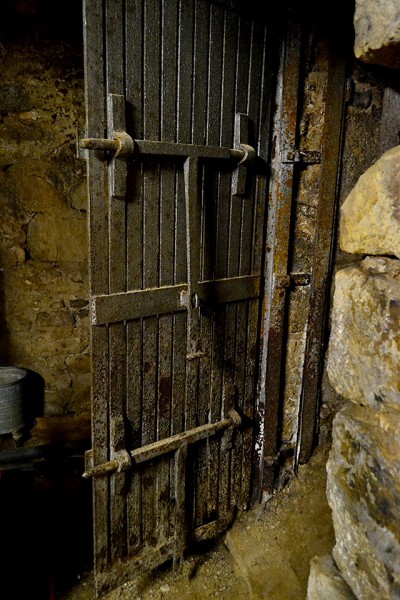 The passageway through the door doesn’t lead anywhere today.
The passageway through the door doesn’t lead anywhere today.
The locking mechanism had to be on the “outside”, making this room the secured area. The only problem is, we couldn’t figure out how you would get to it unless it once opened to the outside.
Forget about the tunnels
Let’s get rid of the tunnel theory first off: The Common Pleas Courthouse is located on one of the tallest hills in Cape. If you tunneled out from the basement, you’d come out in thin air. Digging straight down would take more work than anyone would have undertaken.
An excellent resource for history buffs interested in the courthouse is the National Register of Historic Places registration form. It’s an interesting read, but it doesn’t mention tunnels. (It’s a large file, so it might take awhile to download.)
Rebel guerrilla lynched
It does have the background of a grave marker I spotted at the Bloomfield’s Stoddard County Confederate Memorial.:
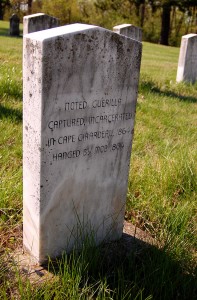 “An infamous case centering on the Court of Common Pleas occurred in February of 1864 when a notorious guerilla, John Fugate Bolin, was captured by Union forces near Bloomfield, Missouri. He was brought back to Cape Girardeau and according to local tradition was kept in the basement of the courthouse. Army telegraph messages back and forth to St. Louis discuss whether to hold Bolin for trial or to just kill him outright. General Clinton Fisk in St. Louis advised Colonel J. B. Rogers, the regimental commander stationed in Cape Girardeau, to hold him for trial. However, on the night of February 5th a large crowd of citizens and soldiers took Bolin from the courthouse, placed him on a wagon, rode him to a tollgate on the Bloomfield Road south of Cape Girardeau and hung him. Fisk afterwards commented that it would “hardly be necessary” to give Bolin a trial. Suggesting Fisk’s reply might be seen as “winking” at the illicit act and to allow him to “better be able to restrain my men” in the future, Rogers requested, and received, a reprimand for allowing mob rule to govern the day. This is one of the few situations in Missouri where the impromptu execution of a guerilla leader was discussed in official correspondence.”
“An infamous case centering on the Court of Common Pleas occurred in February of 1864 when a notorious guerilla, John Fugate Bolin, was captured by Union forces near Bloomfield, Missouri. He was brought back to Cape Girardeau and according to local tradition was kept in the basement of the courthouse. Army telegraph messages back and forth to St. Louis discuss whether to hold Bolin for trial or to just kill him outright. General Clinton Fisk in St. Louis advised Colonel J. B. Rogers, the regimental commander stationed in Cape Girardeau, to hold him for trial. However, on the night of February 5th a large crowd of citizens and soldiers took Bolin from the courthouse, placed him on a wagon, rode him to a tollgate on the Bloomfield Road south of Cape Girardeau and hung him. Fisk afterwards commented that it would “hardly be necessary” to give Bolin a trial. Suggesting Fisk’s reply might be seen as “winking” at the illicit act and to allow him to “better be able to restrain my men” in the future, Rogers requested, and received, a reprimand for allowing mob rule to govern the day. This is one of the few situations in Missouri where the impromptu execution of a guerilla leader was discussed in official correspondence.”
Stairway gets narrow, twisty
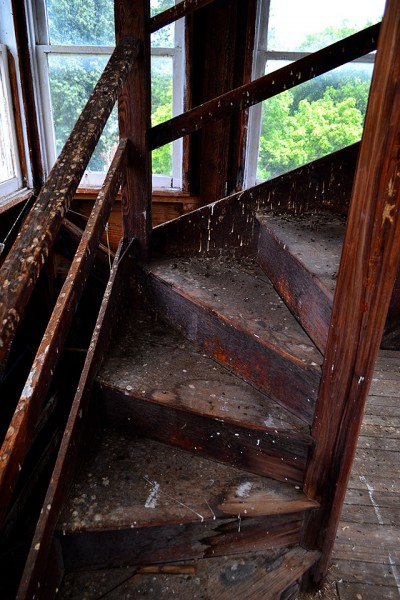
The stairway to the dome felt solid, but it got narrower and more twisty the higher I walked. This is the level where I shot photos of the courthouse grounds and surrounding neighborhood.
I’m glad I hadn’t read up on bird droppings and histoplasmosis when I made this journey.
County seeking grant
The Missourian had a story July 24, 2012, reporting that the county commission will seek a historic preservation grant from the Missouri Department of Natural Resources to support repairs to the building. I don’t know if the money will go for replacing charred timbers in the dome.
Iconic landmark
I’d have to say that the courthouse, Mississippi River bridge (old and new) and Academic Hall are Cape’s most iconic landmarks.
Common Pleas Courthouse photo gallery
Click on any photo to make it larger, then click on the left or right side of the image to move through the gallery.

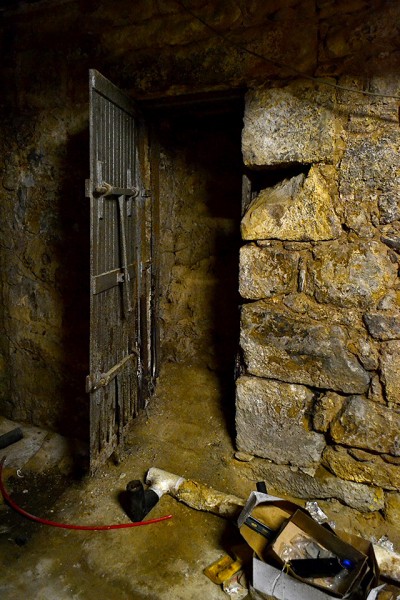
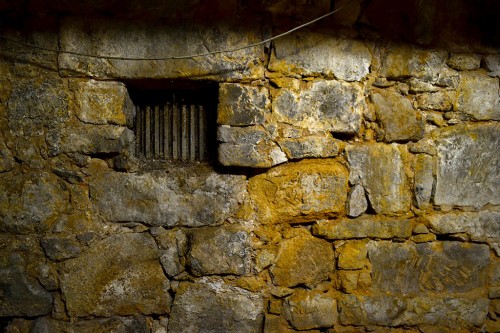
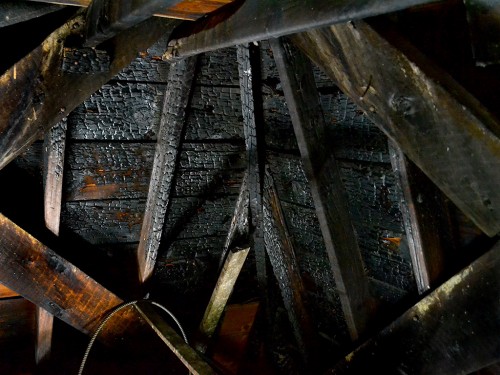
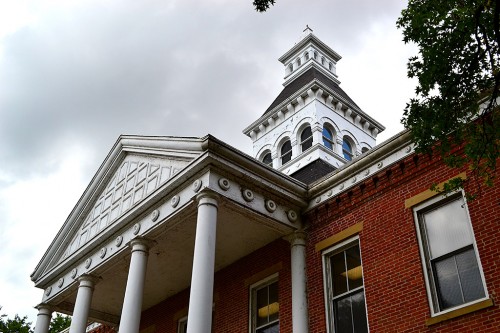
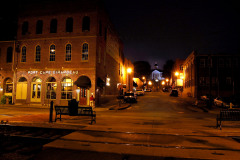
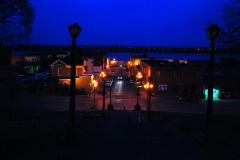
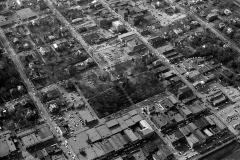
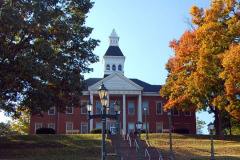
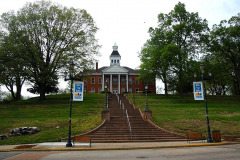
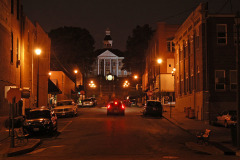
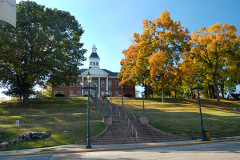
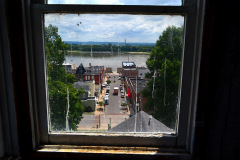
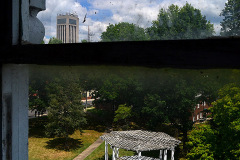
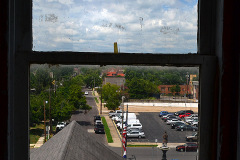
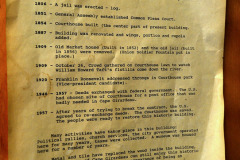
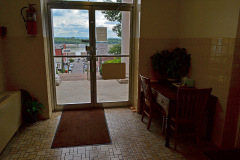
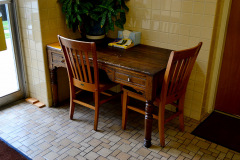
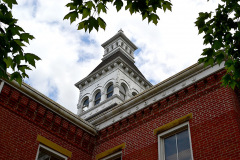
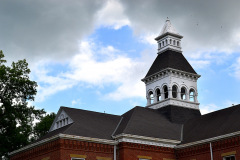
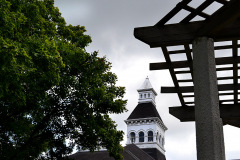
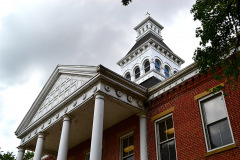
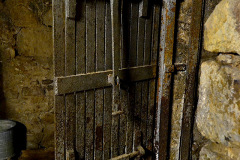
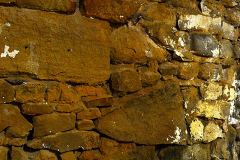

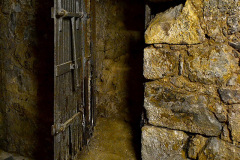
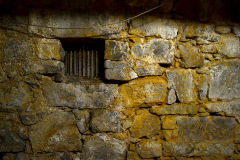
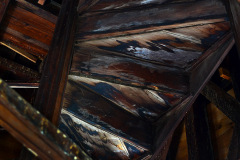
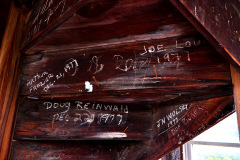
My Great-grandfather, Linus Sanford, was imprisoned in that dungeon during the Civil War. He was a student at Harvard Law School, returned to Jackson, and was interred for an extended time. My cousin, Paul Vandivort, is the one who can really tell the story with authority and conviction. He will do so next July 5th during our Vandivort Family Reunion so that our youngest generation will learn their family/Cape history! Thanks for the great pictures, Ken. I will post a link to them on our family web site to whet the appetites of my cousins for next year’s history lesson.
I was just thinking it looks like what I would imagine to be a prison or some type of place you would see in a movie -set back many years ago. Wow.
all great pics. for those of us who have never been in the old courthouse. I have a picture of the Young family reunion in 1916 supposedly taken on the courthouse lawn.
Thanks for the picutres, Ken. I have been in all these places but no pictures! Love this building. It is a beautiful place and I hope it can always be preserved.
Who wants a break from the heat? Here is a winter view of Common Pleas Courthouse taken by G.D. Fronabarger in 1939:
http://www.semissourian.com/blogs/flynch/entry/44876
From the donation of the land by Louis Lorimier to the comments by Mark Twain to the Supreme Court lawsuit concerning the property, Common Pleas Court house is so symbolic of Cape! It is a landmark which must be preserved! Thanks for the reminders!
Unlike comments in Tiger Updates from Central High, those in response to Ken’s remarkable photos and written descriptions, are largely unknown to me and I’m sure to others. I hope future respondents will provide more than their names–like maiden names, graduation years from CHS or SEMO, or other identifying designations. Thanks, John Burciaga, CHS Class of ’54 and resident of Cape from birth till departure from SEMO in ’58, now living in Newburyport, MA.
Because this is such a well-behaved group, I let people log in and comment without sticking my oar in the water most of the time. The system has a very good spam filter that nabs several hundred to several thousand bogus posts a day. Every once in awhile, like this morning, when a reader posted two links in her message, it holds one for moderation. I don’t make you type funny looking characters or log in through Facebook or another service.
I prefer folks to post under their real names, but I’ll even cut a lot of slack there, so long as the intent isn’t to pretend to be someone else for malicious purposes.
For purposes of identification, I graduated in 1965, after going K-8 at Trinity Lutheran School; born in Cape, but lived in a variety of SE MO towns while Dad was building roads in the area; moved into the house on Kingsway Drive where my mother still lives when I was about 10; worked for all the school publications at Central and SEMO; was a reporter who took pictures at The Jackson Pioneer and Southeast Missourian; transferred to Ohio University as a junior and became photo editor of The OU Post; was chief photographer at The Athens (OH) Messenger and The Gastonia (NC) Gazette; married my high school sweetheart Lila Perry in 1969; have two sons and two grandsons; retired from The Palm Beach Post in 2008 after serving as a staff photographer, director of photography, editorial operations manager and telecommunications manager.
Ken,
My post is awaiting approval.. lol! Let me know if I get out of line on here, ok?
I wasn’t around to give you your blessing. You’re good now.
I always enjoy your pictures ans the comments you make. At any time did you live on North Main Street close to the old shoe fatory? We lived next door to a Steinhoff family and I often wondered if you were part of that family. I remember the girls in the family. Thnak you for sharing with the rest of us.
Not guilty. We were all boys. I had a cousin, J.L. Steinhoff, who had a girl (singular). I vaguely remember him living around Washington School somewhere, but not on Main Street. Even that memory is a little fuzzy.
Glad you enjoy the blog.
When I was in the cub scouts we took a tour of the dungeon and was told that the tunnels used to lead to the river.
Slaves were brought by boat to Cape, brought up through the tunnels and sold on the courthouse steps.
Trust me, nobody would have bothered to dig through all that rock to create a tunnel to bring slaves to the courthouse for auction. They weren’t trying to hide the sale of slaves, so there was no need for the subterfuge.
The tunnel story sounds neat, but it wouldn’t be practical.
I enjoyed your pictures and comments concerning the Common Pleas Court House.
My family and I lived in the historic Whitelaw house, built in 1890. It’s my understanding that the father of Mrs. Whitelaw owned the old St. Charles Hotel in Cape Girardeau. I was told that when it burned down, the cupola was salvaged and placed on top of the municipal courthouse. That may explain the charred timbers.